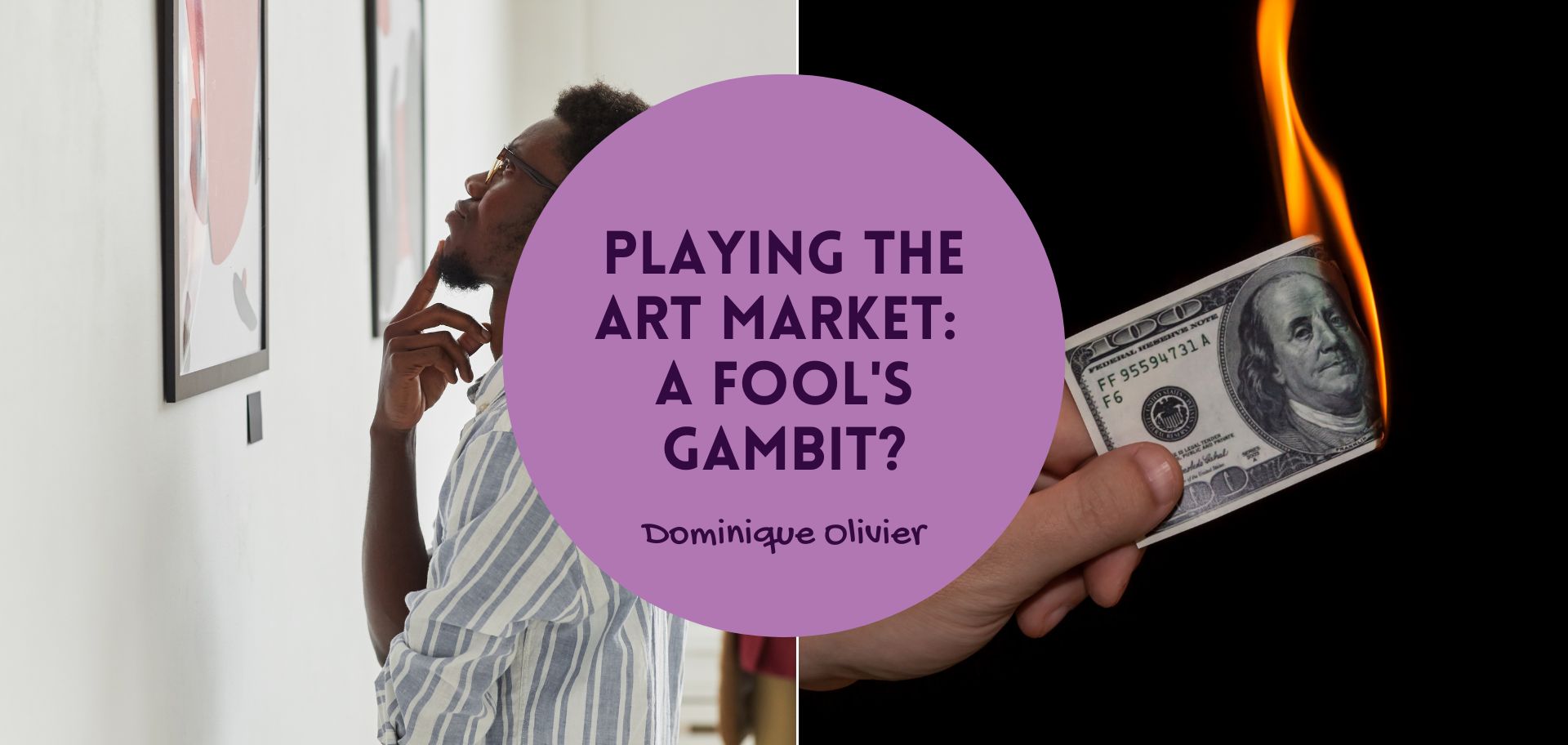In 2018, a framed painting of the ubiquitous Banksy piece “Girl With Balloon” was sold for £860,000 at a Sotheby’s auction. Practically as soon as the gavel hit the sound block, confirming the sale, the painting started lowering itself through a hidden shredding device installed in the bottom of its frame. As shocked onlookers gasped in surprise, the entire bottom half of the work was shredded before its automatic mechanism came to a halt.
You can view the moment, directed by Banksy himself, here:
The art world was shocked, yes, but not necessarily surprised. The anonymous artist known only as Banksy frequently makes work that comments on and criticises the capitalist consumerist society that auction houses like Sotheby’s fit into seamlessly. In hindsight, a move like this makes so much sense that it almost should have been predicted.
As stated by Sotheby’s after the fact, the shredded version of the painting was “the first work in history ever created during a live auction” – and the auction house asserts that they had no idea that it would happen. Besides specific instructions not to remove the artwork from its frame, no other clue had been given that would have led them to suspect the self-destructive nature of the work.
As for the new owner of the painting – well, she was only too happy to agree to keep the shredded work, renamed “Love is in the Bin” by Banksy on social media. And with good reason too, because the next time “Love is in the Bin” went on auction in October 2021, it fetched the incredible sale price of £18,582,000, much more than its estimated value of £4m-£6m.
Paintings that become more valuable because they’ve been deliberately damaged, artworks that lose all value overnight when they are revealed to be forgeries, and forgeries that become more valuable than their originals – these all seem like giant warning signs to investors looking to make money in the art world. Yet in 2020, the Artprice Global Indices put in a stronger performance than pre-pandemic, with the Contemporary Art price index showing a formidable 48% increase.
Which begs the question: is there money to be made from investing in art – or do the risks outweigh the benefits?
Indices: helpful and otherwise
The purpose of any index is to illustrate how prices have changed over time. In the art market, for an index to be meaningful, it needs to be applied to a group of works that share common characteristics. This could be based on a specific art form like sculpture, a movement such as impressionism, or the works of a particular artist, allowing us to track the evolution of their prices.
There are various methods for creating art market indices, with the “repeat-sales method” being one of the most reliable. This approach involves identifying artworks that have been sold at least twice at auction within a certain period. By comparing the prices from these sales, it becomes clear how specific works’ values have changed. After gathering enough data points, we can then chart a curve that reflects these changes over time.
Another approach, developed by academic researchers, is the “hedonic method”. This method analyses the impact of various factors like size, technique, year of creation, and theme on the price of each artwork, helping to estimate the influence of time on its value. As an artist, I feel like I am well-positioned to weigh in here with the opinion that this method sounds about as effective as throwing darts while blindfolded. But again, that’s just one opinion.
Art indices can be useful, but they come with some caveats. Perhaps the biggest one is that they typically rely on auction data, which only covers part of the market and often leaves out private sales through galleries and dealers. That’s effectively 53% of the global art market excluded. It therefore stands to reason that indices can sometimes give a skewed picture, focusing more on big-name artists and high-value pieces, which doesn’t necessarily reflect the broader art market.
Different indices like the Artprice Global Index, Artnet Contemporary C50, and Mei Moses World All Art Index have their own methods. For instance, the Artnet C50 highlights the top contemporary artists, much like the S&P500 does for stocks. Meanwhile, the Mei Moses Index tracks how the same piece of art performs over multiple sales, offering a unique view on how an artwork’s value changes over time.
So while these indices can offer some insights, it’s best to remember that they provide a snapshot of certain segments of the market but don’t tell the whole story.
It’s not what you own, but who
In most publicly-listed businesses, the whims, ideals and interests of the founder do not have a direct impact on the share price. There are notable exceptions to this convention – the likes of Zuckerberg and Musk come to mind immediately – and it’s certainly no coincidence that the stocks that are intrinsically linked to a strong founder personality are amongst the most volatile on the market.
One way to think about investing in art is to imagine that every artist is a Zuckerberg or a Musk. They are so intrinsically linked to their own work that a shift in their style, an interest in a new medium or a period of residency can directly affect the value, not only of that which they could still make, but of that which has already been made. If you wouldn’t invest in Meta or Tesla due to the volatile-founder-factor, then it makes no sense at all to try to invest in art.
Should you decide to go ahead and test your resilience, there are four main groups of artists to consider when weighing up investment options:
Emerging artists: these are artists who are just starting to gain recognition. Indicators include high-quality work, winning some awards or residencies, and having their pieces sold in the primary market. Think of these like a call option, with substantial potential upside as well as the potential to go to zero.
Established artists: artists in this category have been active for at least a decade and have a solid history of exhibitions and sales. They tend to be pricier because they’ve already built a reputation, making them a safer investment with a greater likelihood of appreciating over time.
Contemporary blue-chip: these artists are well-established and consistently in demand, commanding high prices. Their work is highly valued and backed by critics, academics, and the art community.
Modern masters: this group includes historical artists from the 19th and 20th centuries, whose significant contributions to art history make their work highly collectible. Since they are no longer producing new work, their pieces are rare and typically bought from reputable dealers to ensure authenticity.
The only dividend you can rely on
I’ve heard of people who have made marginal returns on expensive investments in art, practically all of which has gone back into the pockets of their art advisors. I’ve known people who have been trying to resell work at a high valuation for years with no success. And I know of more than a few unfortunate souls who will never make back what they lost on an art gamble.
Investing in art is a unique and exciting venture that goes beyond just making money. While the basic idea is to buy pieces that you think will appreciate in value, it’s not as simple as sitting back and watching your investment grow. If you wanted to do that, you could take your pick of less complicated stocks in the market. Art investment requires a good understanding of a very particular market, active engagement, and patience, as it often takes a long-term perspective to see significant returns.
The difference, of course, is that you can’t hang your Microsoft shares on your wall.
That’s exactly why an art investment shouldn’t be driven solely by financial gain. While getting good advice and making well-informed decisions can help protect against losses, there’s never a guarantee of profits. The trick is to remember that the value of art isn’t just monetary; it also carries cultural and personal significance. If you invest in pieces you truly love and feel passionate about, then you’re always getting a return, regardless of the financial outcome. This emotional connection makes the art world a rewarding space for collectors, blending passion with the potential for profit.
About the author: Dominique Olivier

Dominique Olivier is the founder of human.writer, where she uses her love of storytelling and ideation to help brands solve problems.
She is a weekly columnist in Ghost Mail and collaborates with The Finance Ghost on Ghost Mail Weekender, a Sunday publication designed to help you be more interesting.
Dominique can be reached on LinkedIn here.





Authenticating and valuing art has often been controversial.
Simon Gray wrote an excellent play on this subject. In the play, a renowned art critic is pressurised by the owner of an unsigned painting to attribute it to Giorgione rather than Titian because that would substantially increase its value. Millions of dollars of “value” thus hung on one person’s opinion.
This has happened in real life too, particularly with famous painters such as Vermeer or Velasquez, who didn’t sign or date their paintings, and who were often copied by other artists. Just saying there is a “high certainty” that a painting is by Vermeer or Velasquez can dramatically increase its value. And of course the value can go the other way if the art valuer changes his mind!
Yes! This reminds me of the Salvator Mundi, a painting sufficiently attributed to Da Vinci that the Saudis paid $450 million for it in 2017. It was worth about $1,200 in 2005 before opinions changed.
Thanks for bringing up a topic dear to my heart (but not my wallet!). I had a brief attempt at collection before kids intervened 😅
Art and shares have some interesting differences. The “best” thing an established artist can do to increase the value of his or her portfolio is to die. It’s not great for the artist and hard to repeat. If the entrepreneur driving a company dies, however, it could spell disaster (Apple being a counterpoint).
I bought my first shares at the Discovery IPO in 1999. They were still in paper form. I should’ve hung one of the certificates on my wall as a memento, now that you mention it 😂